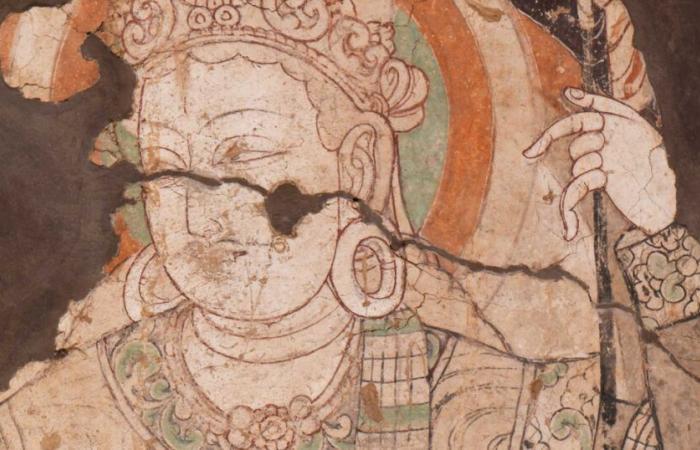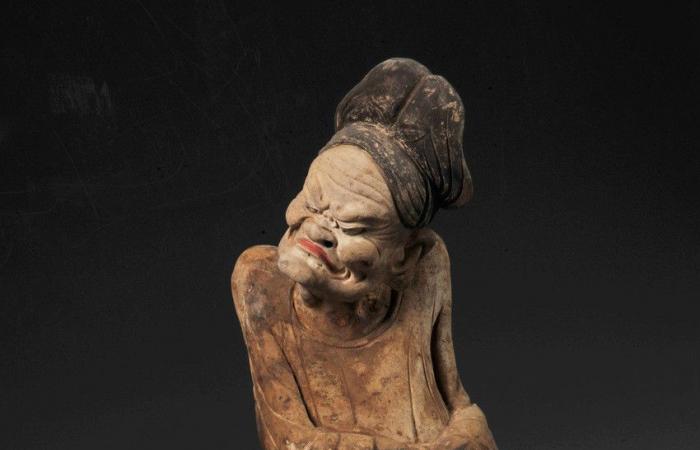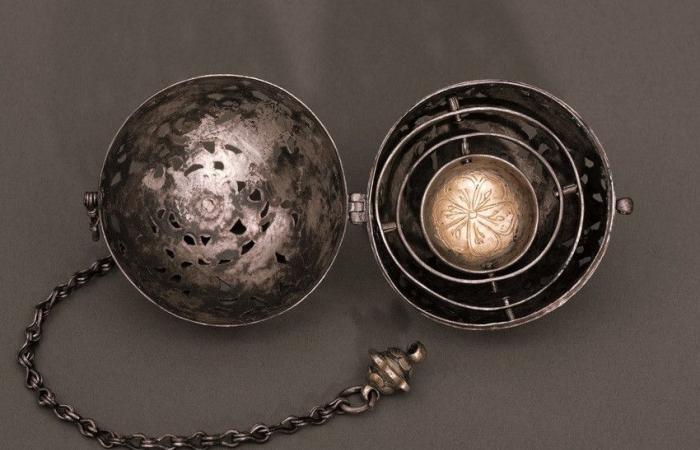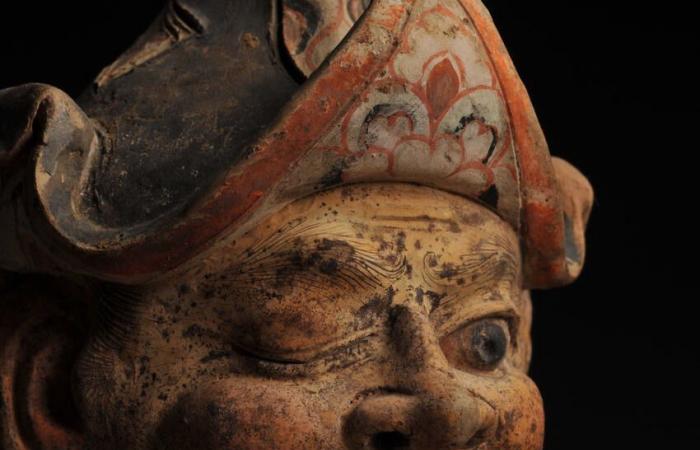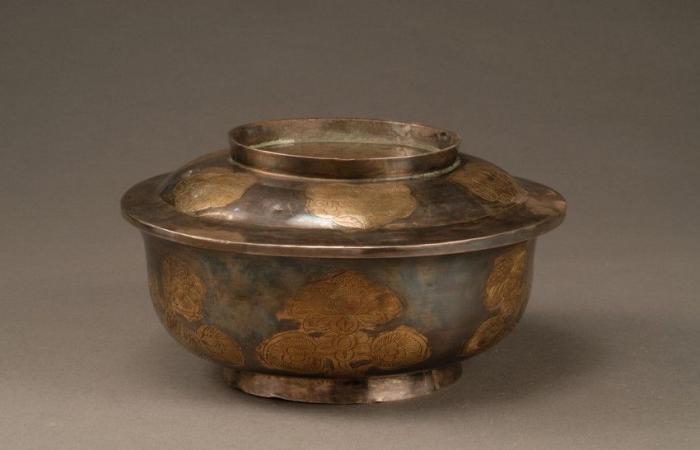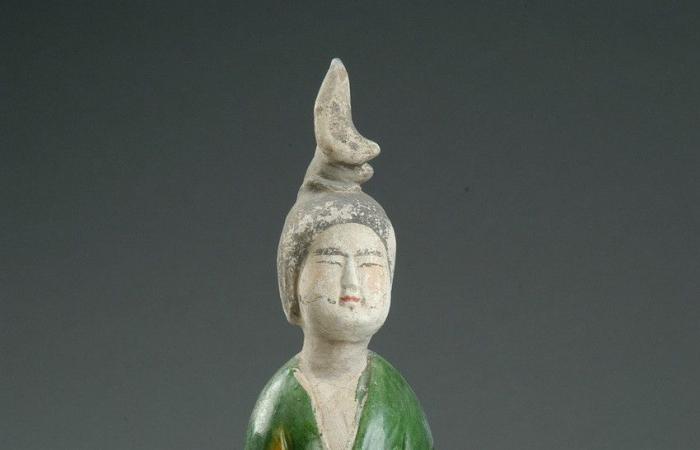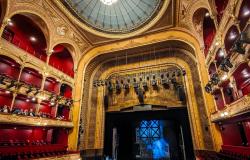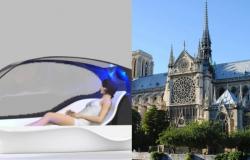It is a terracotta statuette discovered in 2002 in a tomb in a district of Chang’an (the current city of Xi’an) which perhaps best sums up the cosmopolitan atmosphere of the flourishing Tang dynasty which reigned for nearly three centuries over the vast Middle Kingdom. Wedged between the two humps of a proud camel with its open mouth, a man seemingly from Persia or Central Asia and sporting a full beard, a turban, a cuffed dress and pointed boots is preparing to strike with his chopsticks the tambourine hung on his chest.
Witnesses to a teeming world
No doubt… We are indeed transported to the heart of this long path of dirt and sand conveniently named “Silk Road” and through which men, goods, techniques, ideas and religions passed for centuries. . To be convinced of this, it is enough to admire this small world of soldiers, grooms, musicians, dancers, burlesque actors and acrobats exhumed by the thousands from Chinese tombs, and which reflect, more than all long speeches, the cosmopolitan and colorful character of this society deeply open to the outside world…
Burlesque actor, Gansu, 730, painted terracotta, 48cm ©Qingcheng, Qingcheng District Museum.
Far from being an inward-looking civilization, Tang China was in fact a formidable melting pot of economic, artistic and spiritual exchanges. Hubs of trade between the Western and Eastern kingdoms, its twin capitals, Chang’an and Luoyang, were then the two largest cities in the world and their ruling elites would, in many ways, propel society Chinese in a new era of “globalization” and “modernity”. “Under the Tang dynasty, China was a space that attracted, but not only that: it shined”summarizes Christophe Decoudun, specialist in Buddhist arts, in the catalog of the exhibition at the Guimet museum.
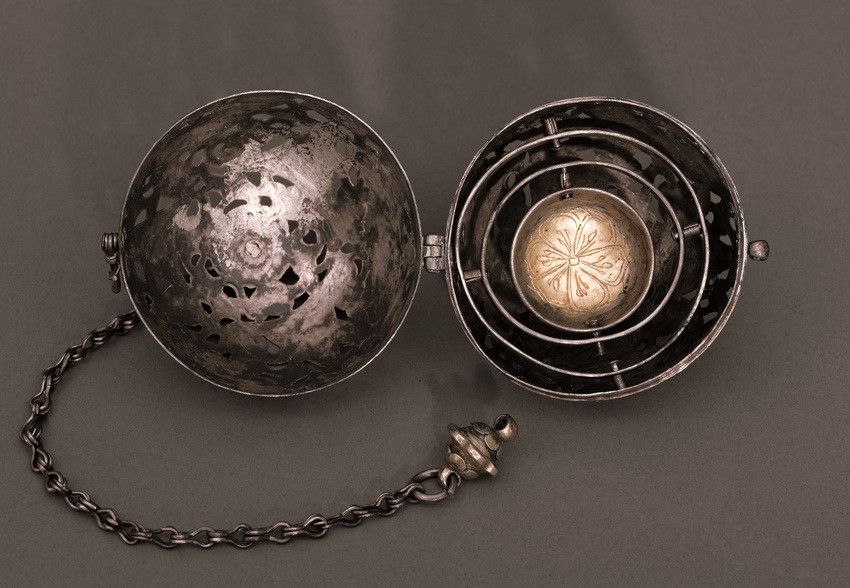
Incense holder with openwork decoration of birds and floral scrolls, Shaanxi, 9th century, gilded silver, 18 x 5.8 cm ©Famen Zhen, Famensi Museum.
Technical feats and hybridization of forms
We must then imagine its megalopolises teeming with crowds of merchants, artisans and pilgrims coming from Baghdad, Bukhara, Samarkand or Constantinople bringing in their luggage their lifestyles, their know-how and their beliefs. Against the backdrop of pax sinica (period of stability and peace reigning over all of Eastern Asia), business is then prosperous and almost all the rarest and most precious commodities coveted by the greats of this world are exchanged: silk safe, so light and so voluptuous, but also hard stones, metals and jewelry, without forgetting exotic animals, spices and plants for pharmacopoeias. Managing, thanks to its checkerboard plan, to contain 1.2 million inhabitants, the city of Chang’an then buzzes with smells and perfumes, and attracts the finest experts to its bazaars and warehouses. and traders from Persia, Arabia, India and Central Asia. “The Western market had many varieties of incense, a product particularly popular with the Chinese. It hosted a Persian bazaar where one found, among others, connoisseurs of pearls and jades. These hardstone experts were mostly from Central Asia and advised the city’s Chinese residents. One sector in particular quickly transformed into a neighborhood of jewelers and goldsmiths – all proto-banks run for the most part by Uighur Turks.specify the two commissioners Arnaud Bertrand and Huei-Chung Tsao.

Foreign figure, 730, painted terracotta, 54 cm ©Qingcheng, Qingcheng District Museum.
It is then often very difficult to attribute an ewer or a piece of jewelry to a Chinese or foreign craftsman, as the Tang style was born precisely from this taste for the improvement of materials and the hybridization of forms. Discovered in 1991 in the tomb of Lady Wu of the State of Qi, a gilded silver cup and saucer used to prepare tea (a drink which then experienced its first boom) are reminiscent of the pieces of goldwork produced in Persia and Sogdiana (region covering part of current Afghanistan, Uzbekistan and Tajikistan).
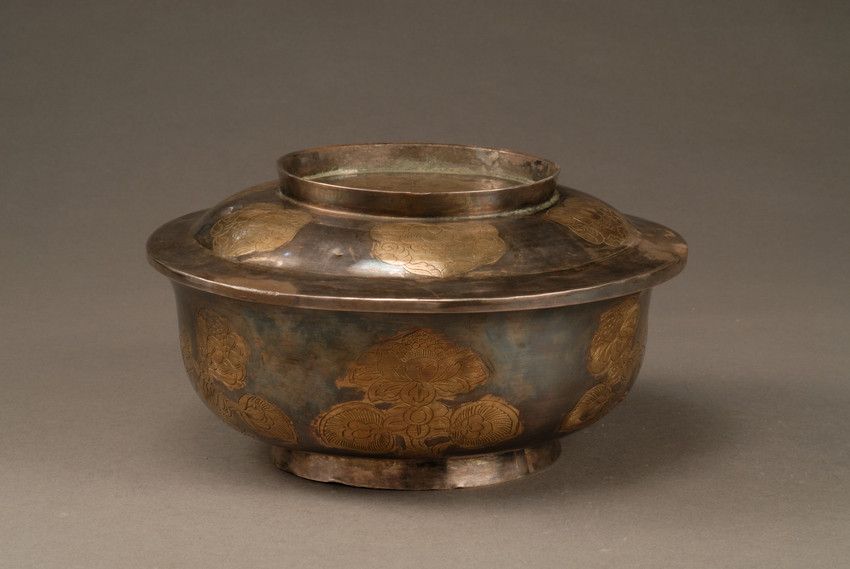
Large bowl with floral-patterned lid, Shaanxi, 8th century, gilded silver, 9.5 x 21.8 cm ©Xi’an, Shaanxi History Museum.
On the contraryChinese artisans competed in inventiveness in the field of ceramics. It was in fact under the Tang dynasty that the most virtuoso technical experiments were born, such as the invention of white porcelain of incredible purity, the delicacy of cetadon and its exquisite nuances, the so-called ceramics Sancai with “three-color” glazed decoration, or even the blue and white porcelain promised such long success…
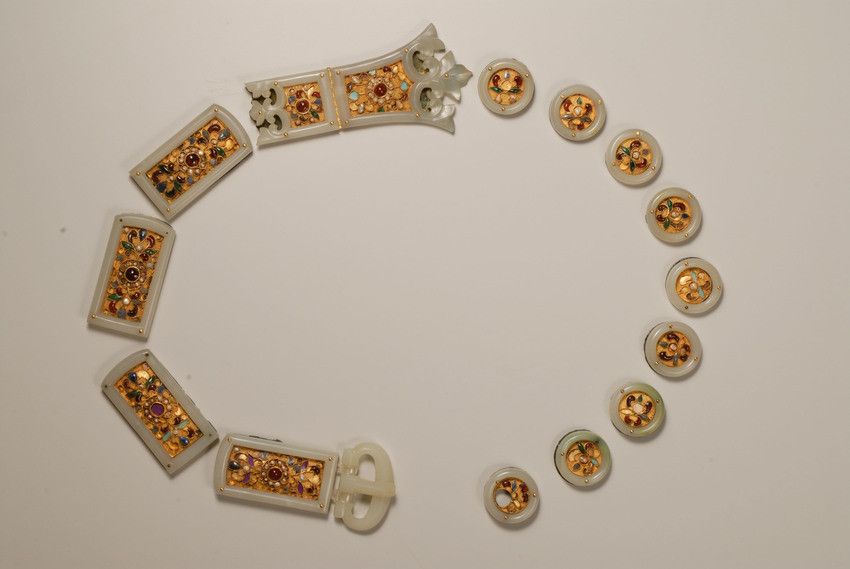 Belt DiexieShaanxi, 627, jade, gold, pearls and glass, 150 cm ©Xi’an, Shaanxi Institute of Archaeology.
Belt DiexieShaanxi, 627, jade, gold, pearls and glass, 150 cm ©Xi’an, Shaanxi Institute of Archaeology.Reserved for officials of the first three ranks, jade belts were also pretexts for technical prowess, such as this example unearthed in 1991 in the tomb of Dou Jiao (597-627), the cousin of Emperor Taizong . A badge of power as much as an accessory of adornment, this jewel marvelously combines the sculpture of a hard stone, the granulation of gold and the manufacture of colored glasses imitating precious stones.
An aesthetic of the feminine
But if there is a theme dear to poets and artists of the Tang era, it is that of women, presented in their multiple facets. So, how can we not be ecstatic in front of these ravishing terracotta musicians playing the flute, the mouth organ or the zither for eternity? And how to interpret these graceful dancers with “long sleeves” whose celestial choreographies are now frozen behind the windows of a museum? Even more delicious appear these cohorts of princesses, court ladies and concubines with lunar faces and buns in “saber blade” or “spiral”. As if taken from a fashion magazine, their attire and hair designs seem to pose a challenge to all the coquettes on earth!
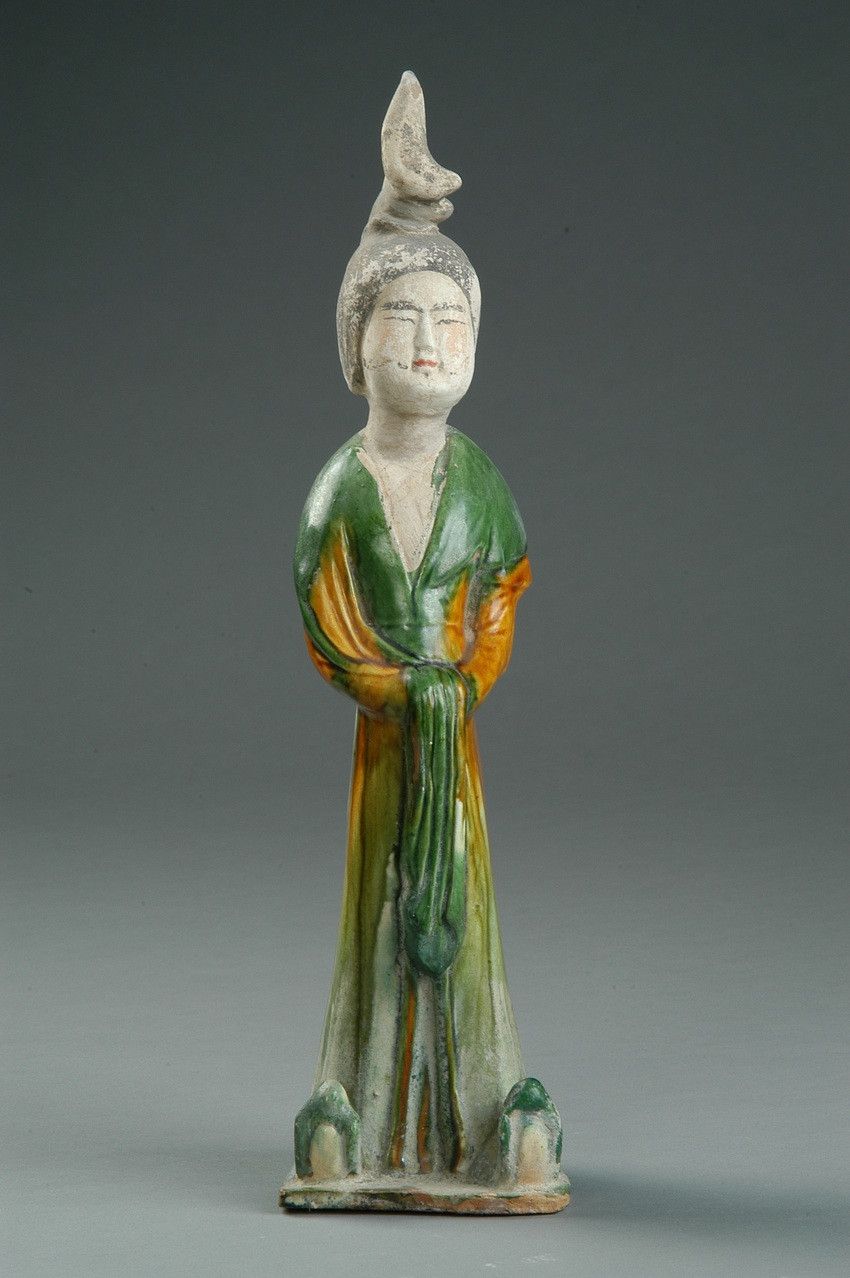
Female figure, Henan, 709, terracotta with three-color glaze (sancai), 39 x10 x 9 cm ©Luoyang, Luoyang Museum.
“The court is also marked by feminine culture, with women enjoying freedom under the Tang unparalleled under other dynasties. Towards the end of the 8th centurye and during the 9the century, women become heroines in narrative and poetic productions, instead of simply being paragons of virtue.analyzes sinologist Yolaine Escande. Among the most beautiful “nuggets” of the exhibition, we will particularly admire the figurines of polo players captured from life, or even a disturbing rider wearing a hat weimao and a veil… which one would think emerged from our Western Middle Ages.
The great Chinese composer and conductor Tan Dun will offer at the Guimet Museum on December 13, 14 and 15, a world creation inspired by the Tang dynasty and the famous manuscripts discovered by Paul Pelliot in the Mogao caves in Dunhuang. Online and on-site ticketing.

